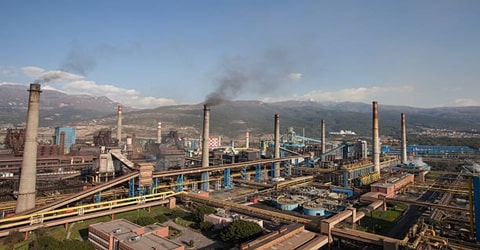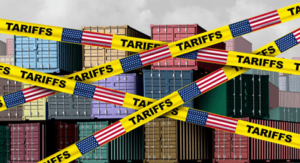
The Impact of Chinese Manufacturing Decline
The impact of Chinese manufacturing decline is becoming increasingly apparent on the world stage. Once a global powerhouse, China’s manufacturing sector is now facing significant headwinds, reminiscent of Japan’s industrial challenges in the late 20th century. Overcapacity, a shrinking labour force, and an overreliance on foreign markets have combined to drive this downturn.
The repercussions, however, stretch far beyond China’s borders. As Chinese goods lose prominence in the US market and domestic manufacturers shift operations to countries like Vietnam and Mexico, the broader global trade landscape is being reshaped, signalling profound changes for the future of manufacturing and international economic relations.
Impact of Chinese Manufacturing Decline
China has long been considered the world’s manufacturing powerhouse, with nearly one-third of the world’s manufacturing value-added and a significant portion of global exports. However, signs of decline in this sector are becoming evident. By looking at Japan’s manufacturing downturn and its impact on the global economy, we can anticipate similar challenges for China.
Read More: Japan’s Economic Recession: A Threatens to Global Market
Below are seven key points analyzing the factors contributing to China’s manufacturing decline and its broader implications for the global economy.
Table of Contents
1. Overcapacity and Its Global Implications
Chinese overcapacity has been a persistent issue, raising concerns worldwide. For decades, China maintained its manufacturing dominance by producing more goods than the domestic market could consume. This surplus production was largely driven by foreign demand, particularly from the United States. From 1985 to 2017, the share of Chinese goods in US imports skyrocketed from 1% to 22%.
However, maintaining such a massive output has led to significant inefficiencies and economic distortions. As domestic demand remained weak due to low household consumption, China continued to rely on exporting its excess production to international markets.
Over time, this has created global imbalances, contributing to trade tensions and economic friction, particularly with the United States. As China now faces the impact of its manufacturing decline, coupled with growing international backlash and weakening demand from foreign markets, its overcapacity issue is becoming unsustainable.
Read More: The Economics of Techno-Colonialism
2. Lessons from Japan’s Manufacturing Decline
To understand China’s current predicament, it is instructive to compare it to Japan’s manufacturing decline in the late 20th century. Japan’s manufacturing rise was fueled by its access to the US market post-World War II. However, the 1985 Plaza Accord, which appreciated the yen, alongside an aging population, eventually reversed Japan’s manufacturing growth.
Japan’s share of US imports dropped significantly, and its overall share in global manufacturing value-added declined sharply.
China’s manufacturing sector faces similar pressures. Like Japan, China has become highly dependent on the US market. And like Japan, China’s demographic challenges—a rapidly aging population and declining birth rates—threaten its long-term economic vitality.
The impact of Chinese manufacturing decline, exacerbated by these demographic issues and rising labor costs, mirrors the long-lasting effects Japan faced after the Plaza Accord. The parallels between the two countries suggest that China is likely to experience a prolonged period of manufacturing decline similar to Japan’s post-Plaza Accord phase.
Read More: A New Economics Of Industrial Policy
3. The Aftermath of the One-Child Policy
China’s family-planning policies, particularly the one-child policy, have had profound effects on its economy, especially in the manufacturing sector. The policy, which was enforced from 1980 to 2015, led to a reduction in household disposable income and dampened domestic demand.
Currently, household disposable income in China accounts for only 44% of GDP, a significant drop from 62% in 1983. This reduction in consumer spending has limited the ability of China’s economy to absorb its manufacturing output domestically, making the country overly reliant on exports.
As China now grapples with the long-term demographic consequences of its one-child policy, its labor force is shrinking. Fewer workers mean fewer consumers, which could exacerbate the country’s economic slowdown. Additionally, the aging population is contributing to rising labor costs, further eroding the competitiveness of Chinese manufacturing.
These factors, combined with shifting global dynamics, are contributing to the impact of Chinese manufacturing decline, where reduced labor availability and increasing costs are making it harder for China to maintain its former dominance in global manufacturing.
Read More: US-China Trade War Threatens Global Economic Stability
4. The Erosion of the US Market
China’s dependence on the US market has long been one of its economic lifelines. In 2001-18, the US accounted for three-quarters of China’s trade surplus, but this dynamic is changing. The introduction of tariffs by the Trump administration in 2018, followed by an escalation of trade restrictions under President Biden, has led to a sharp decline in Chinese exports to the US.
In the first half of 2024, China’s share of US imports dropped to just 12.7%, down from its peak of 22% in 2017.
As US-China trade tensions intensify, many Chinese companies are relocating production to other countries like Vietnam and Mexico to circumvent tariffs. This shift is gradually eroding China’s manufacturing base, much as Japan’s exports shrank in the aftermath of the Plaza Accord.
The impact of Chinese manufacturing decline is further compounded by these relocations, weakening its industrial dominance and adding pressure to its already fragile economic growth.
Read More: Global Political Instability Signals for Rethinking Political Economics
5. The Aging Workforce Crisis
China’s labor market is undergoing a significant transformation. The manufacturing workforce is shrinking, and those who remain are aging rapidly. The number of annual births in China has declined dramatically, from an average of 23.4 million in 1962-90 to just nine million in recent years.
The majority of manufacturing workers in China are migrant laborers, and their median age has increased from 34 in 2008 to 43 in 2023.
As the working-age population continues to shrink, manufacturing plants are closing due to labor shortages, exacerbating the impact of Chinese manufacturing decline. This decline has far-reaching implications for global supply chains and economic stability.
Moreover, the aging workforce adds further pressure on the sector, as older workers are generally less adaptable to technological advancements, including the adoption of artificial intelligence and automation, which China is betting on to maintain its manufacturing competitiveness.
Read More: China’s Economic Slowdown: A Warning for Global Markets
6. A New Economic Reality
In addition to its demographic and labor challenges, China is experiencing a shift in its economic structure, with services becoming an increasingly important part of the economy.
As disposable income rises, the demand for services—rather than manufactured goods—is growing. This trend is similar to what occurred in Japan, where the services sector expanded at the expense of manufacturing.
The impact of Chinese manufacturing decline is becoming more evident as the Chinese government promotes policies aimed at boosting household consumption and reducing reliance on export-driven growth.
As a result, the share of household disposable income is expected to increase, and a greater portion of the workforce is likely to transition from manufacturing to services. While this may help sustain economic growth in the short term, it also signifies the decline of manufacturing as the dominant driver of China’s economy.
7. Slowing the Decline but Not Reversing It
Despite these challenges, China is making significant investments in technology, particularly in artificial intelligence and robotics, in an attempt to boost productivity and mitigate the effects of its shrinking workforce. This investment may slow the impact of Chinese manufacturing decline but is unlikely to reverse it entirely.
China’s complete industrial ecosystem and large domestic market offer some resilience against the pace of decline. However, demographic realities, coupled with rising labor costs and increasing global competition, make it difficult for the country to sustain its manufacturing dominance in the long run.
Like Japan, China’s shift away from manufacturing appears inevitable, and while the decline may be more gradual, it will be irreversible.
Read More: The Irony of American-Chinese Economic Relations
Bottom Line
The decline of China’s manufacturing sector is a multifaceted issue shaped by overcapacity, demographic challenges, global trade dynamics, and shifting economic structures.
As China transitions to a more service-oriented economy, the global manufacturing landscape will undergo significant changes, much as it did during Japan’s economic shift. While China may still hold a strong position in global manufacturing for some time, the long-term trajectory points toward a gradual but inevitable decline, with profound implications for global trade and economic balances.





